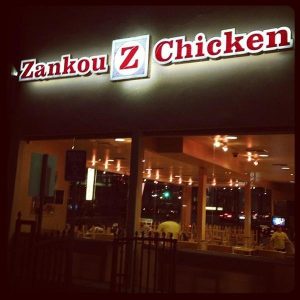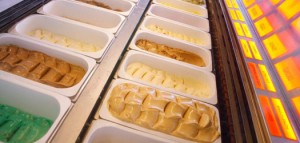New pastries to look for during your next Angelina tea house trip
Comments Off on New pastries to look for during your next Angelina tea house trip
 Article submitted by Cécile Zarokian
Article submitted by Cécile Zarokian
During your next visit to Angelina tearoom, make sure that you try their collection of mouth-watering pastries. These new pastries are so delicious that you can’t resist it. If you take one bite of the pastry, its unique flavors will burst in your mouth. It would be really difficult to decide which pastry you want the most as each pastry is more delicious than the others.
The Mont-Blanc combines chestnut cream and speculoos. It is coated with chestnut paste vermicelli and holds a French meringue, whipped cream and a speculoos cream.
Next is Succès Noisette. It is a crispy hazelnut dacquoise with salt flower that is topped with hazelnut cream. There is a crispy praline inside it and dry fruits all around. The Délice framboise-pistache is a dessert with a combination of a raspberry mousse and a crispy pistachio biscuit and a pistachio cream.
Another pastry is the Merveille, which is actually a light mousse with nougat touches, enhanced by a fruity heart made of blackberries and blackcurrant. The Trocadéro is a creation mixing a milk chocolate ganache, whipped cream and a hazelnut cookie.
The Tarte noix-caramel has crispy and caramelized walnuts finely put on top of the sugar dough and covered in walnut caramel. The Jardin poire-praliné is made of a praline cookie, an almond mousse, a pear heart and a fresh pear jelly.
All these pastries are a great addition to the menu of Angelina Tea House. Do not miss the opportunity to enjoy these delectable desserts during your visit to Paris.
Opening a Café? Some Extra Costs to Consider
November 28, 2016 by admin
Filed under Food, Goods and Services
Comments Off on Opening a Café? Some Extra Costs to Consider
 Opening your own café is the ultimate dream come true. It’s a chance to show off your skills in cooking or drink making, to find a way to build a community around your space and to exercise your business acumen. It’s an exciting prospect, but it’s also a lot of work. Aside from the occasional burn, and slow day, there are some extra costs that some of us miss when we’re envisioning that dream.
Opening your own café is the ultimate dream come true. It’s a chance to show off your skills in cooking or drink making, to find a way to build a community around your space and to exercise your business acumen. It’s an exciting prospect, but it’s also a lot of work. Aside from the occasional burn, and slow day, there are some extra costs that some of us miss when we’re envisioning that dream.
Inventory Costs
All those white paper cups add up to real dollars when you’re looking at your costs for the year. That’s one area where new business owners tend to get wrong. Ordering too little means you’re out when you may have a customer rush. Ordering too much means you’ll have lots of extra inventory for next year, if you make it that long. You want to avoid those extra costs as much as possible by looking at whatever seasonal sales data is available to you. This is one reason why many people opt for the franchise model. They tend to provide this data to you, so you can base your work on their previous findings.
You can also look closely at the materials used in the coffee cups and lids you buy. Be forewarned that you can cut costs by going with cheaper materials but it’s smarter to get better quality cups in bulk. Customers know a shoddy product when they see one, and that’s not how most people want their businesses to be remembered.
Branding Costs
Ordering paper coffee cups in bulk also saves you money when you’re looking into branding. Those fancy Starbucks cups come at a cost, but the premium is worth it to the company because the benefit from brand recognition. Many frozen yogurt franchises do the same, with bright colors and intricate logos. Look into printing costs for these items. Is it cheaper to print on bags or cups? What about colored spoons and branded merchandise? What about loyalty cards? All of these methods help develop branding and encourage customer loyalty.
Regulations and Fees
The final hidden cost is the cost to do business in your state. Does your state have particular health codes or requirements you must adhere to, outside of the basic ones required to keep your food safe for consumption? If so, you may need additional equipment to comply, or permits to operate. You should also check with your city’s Chamber of Commerce to find out what they recommend, and if they have resources for you to get started.
Gelato Products sells coffee cups and lids in bulk, with free ground shipping available throughout the United States.
Looking for Something New for Dinner Tonight? Try Zankou Chicken
Comments Off on Looking for Something New for Dinner Tonight? Try Zankou Chicken
 When you visit any of the Los Angeles Zankou locations, you’ll be immediately greeted by delicious smelling food. The menu is in vibrant color and you’re next up. What do you do? If you’re struggling to decide on whether the plate or wrap is right for you, then read for a brief description of each item so you can figure out how much food you’ll need to sate the hunger.
When you visit any of the Los Angeles Zankou locations, you’ll be immediately greeted by delicious smelling food. The menu is in vibrant color and you’re next up. What do you do? If you’re struggling to decide on whether the plate or wrap is right for you, then read for a brief description of each item so you can figure out how much food you’ll need to sate the hunger.
Plates
Zankou Chicken’s plates are one of the best values to be found in all of fast casual food. You get a plate of delicious food, including a salad, hummus, pita and meat, for around $10. It’s definitely enough to last two meals, so it’s a great way to treat yourself on lunch break at work. The plate is nice because of the salad, which comes with turnips and pepperoncini peppers too. Rice is your other side dish, which is an excellent alternative to the usual side dish fare you find at Mc Donald’s and the like.
As you might expect, plates aren’t for the faint of appetite. You get a lot of food, and you get to sample a lot of the signature dishes that Zankou is known for, but it might be overwhelming for one person with a tiny appetite. In that situation, you should eat the salad mostly so your plate won’t be soggy leftovers the next day.
Wraps
Wraps are basically a staple of Mediterranean cuisine, and they are the perfect sized meal for those on the go. Wraps are chock full of meats, veggies and garlic sauce is served on the side. You can get everything to keep you going, and Zankou offers a vegan friendly alternative too. If you’re looking to reduce your meat intake, but you still want that protein, try their falafel balls.
All About Tahini
If you go to a place like Zankou Chicken, you’ll find that they offer tahini sauce with some of their sides. In the case of Zankou, the tahini is actually the salad dressing used for each plate. Tahini is a popular paste made from toasted, ground hulled sesame seeds. It’s a lot like peanut butter, even having a similar consistency and thickness, but the difference is it’s made from sesame seeds.
Tahini comes from the Arabic word “tahana”, which means “to grind”. It also shares a root word meaning “flour”, depending on which dialect is speaking the term. It’s a popular side in the Mediterranean world, but it’s also an ingredient used in other dishes.
At Zankou Chicken, you can order tahini salad. The salad uses tahini as the base for a dressing, which also goes great with the sandwiches and wraps. The salad itself is simple: consisting of just tomatoes and romaine. Still, that dressing really makes the plate complete.
Tahini paste is used in many dishes of Mediterranean origin, even tahini cookies (which are very chewy and delicious). We know that sesame was mentioned in cuneiform over 4,000 years ago, leading some to believe the paste and dressings are quite old. There is also a 13th century Arabic cookbook that describes hummus using tahini paste as one of the ingredients, leading historians to believe that it’s likely tahini paste has been around for some time.
You can also buy tahini at your local super market, but be wary. The bottle contains some oil in it, so you’ll need to refrigerate your paste to get the consistency you want and avoid spoilage.
How Wholesaling Has Helped Strengthen Gelato Businesses
February 24, 2016 by admin
Filed under Business Services, Food, Goods and Services
Comments Off on How Wholesaling Has Helped Strengthen Gelato Businesses
The smooth and creamy gelato is a beloved dessert in Italy but has struggled to maintain a foothold in the U.S. due to the low-quality interpretations that are currently being sold. However, there are successful gelato businesses that have crafted the tastiest recipes, and they’re finding successes beyond the typical brick and mortar store.

Gelato businesses have one thing in common, they want to be successful and create the best gelato. Most independent businesses start out with a brick and mortar store and depending on their success find themselves at a crossroads. Do they want to continue their shop and possibly expand, or add wholesaling to their business plan?
Wholesaling
Businesses wholesale to grow their business and meet the demands of the market. When it comes to running a gelateria, wholesaling can put owners in the position of a middleman for other businesses. This can be a lucrative opportunity for many businesses that are already finding success in their brick and mortar stores. Additionally, gelato suppliers are finding the addition of wholesaling to their arsenal to be a fruitful endeavor thanks to the part of spreading their brand name outside of their reach.
Risks
As with any business decision, there are risks involved. Wholesaling can ultimately result in lower profits if there is a sudden drop in demand, leaving businesses with an abundance of products without an inventory to stock. Going full wholesale is less risky because of the lower overhead. Owning a shop comes with rent, utilities, property taxes, restocking of supplies such as gelato cups and spoons, and other expenses.
Trends Are Based on Market Demand
The success of wholesaling is dependent on the marketing demand. If the trend has been strong, your gelato business could take on a plethora of clients to cater to and bring in a steady income. If you’re planning to wholesale while running a shop, there isn’t much risk involved and really only involves an extra step.
If your business has been slow, wholesaling on the side can net you an extra revenue stream to pick up the slack of your business. It also allows you to advertise your product in multiple locations at once for cross-promotions with the businesses that you’re partnered up with.
The Bottom Line
Wholesaling has the advantage of bringing in an extra stream of income to a shop. Today, many gelato businesses are taking advantage of it to create business connections, earn reinvestment funds, and increase their market share. Selling more products without having to dish out additional funds certainly sounds appealing, doesn’t it? If your passion is driving your ambitious nature, thousands of possibilities will open up before your eyes.
———————————————————————————————-
Gelato Products carries thousands of premium dessert supplies such as: gelato pan liners, gelato cups, and frozen yogurt cups.
Tips for Starting a Frozen Yogurt Business
November 23, 2015 by admin
Filed under Food, Goods and Services
Comments Off on Tips for Starting a Frozen Yogurt Business
Starting a business is all about being prepared for certain challenges.
 Opening up a frozen yogurt shop of your own can be a challenging but rewarding experience. Before you decide on going through with this plan, it’s important that you acknowledge that there will be both successes and failures. Here are some tips that will get you started.
Opening up a frozen yogurt shop of your own can be a challenging but rewarding experience. Before you decide on going through with this plan, it’s important that you acknowledge that there will be both successes and failures. Here are some tips that will get you started.
Develop a Plan
It’s important to develop a plan before you get started on opening up a legitimate shop. Be sure that you take a look at the laws of your state to understand what you can and can’t do when it comes to building codes, regulations, and so forth.
Before you begin your search for a potential site for your shop, take the time to understand the demands and interests of your area. It’s obvious that a cold-weathered area won’t garner as much attention and business as a hotter region. One idea that will help give you an idea of your community is by creating a survey and go door-to-door or hire a research firm to take care of it for you. You’ll receive information regarding gender, income, interests, etc. These values will determine whether your business has a chance to succeed or tank.
Find Suppliers
Next, you’ll want to find competitive frozen yogurt suppliers that are willing to give you solid rates on supplies such as spoons, cups, and even a machine or two. Calculate a budget and factor in everything that you need to get up and running to see how much capital you’re going to have to place into your shop at first.
It isn’t wise to order thousands of frozen yogurt paper cups and utensils before actually committing to a plan that has a chance to succeed. Instead of wasting your precious investment, plan ahead and give yourself all the opportunities to generate a positive return. The more organized that you are, the better your investment will turn out.
Gelato Products is a leading supplier of frozen yogurt spoons, gelato cups, and high-quality supplies.
Five Spice Throughout History
This article was written by Phin Upham
Five spice is a combination of five Asian ingredients typically used in the kitchens of Middle Eastern and Asian cooks. Five spice is best when it is used with fatty meats, like pork or goose. It’s also a good rub for chicken, and can be added to fried foods for a bit of extra flavor in the dish. It’s most popular in the restaurant setting, but does find a place in gourmet cooking at home. Many families make their own variations on five spice, typically producing something akin to seasoned salt.
Five spice is mixed according to its tradition, or background.
Chinese Tradition
Chinese five spice is a golden powder that is fragrant. It has star anise, fennel, cloves, cassia, and Sichuan pepper in it. The diner should notice the flavor of star anise the most, but five spice is used sparingly in Chinese cuisine. In traditional Chinese cooking, herbs do not stand out from one another. They blend together to form a unique taste. Five spice, therefore, compliments many dishes well.
Indian Tradition
Indian five spice is used commonly by their chefs, and has a more pronounced hotness and flavor to it than the Chinese variety. In Indian cuisine, savory is the name of the game. Indian five spice tends to have cumin, balck mustard, fennel, fenugreek and nigella all in equal proportions. The spice is also used whole, and typically not ground into a powder before serving.
About the Author: Phin Upham is an investor at a family office/hedgefund, where he focuses on special situation illiquid investing. Before this position, Phin Upham was working at Morgan Stanley in the Media & Technology group. You may contact Phin on his Twitter page.
Hostess Cupcakes: Edible icons
Written by Samuel Phineas Upham
1919 was an exciting time for America. The Roaring Twenties were set to kick off, ushering in an era of prohibition and big band music. It was also the same year that a company called Hostess released a snack cake called “The Cupcake.”
For the early 1920s, Cupcakes were sold individually and hand frosted with either a chocolate or vanilla frosting. Some Cupcakes were available with malted milk icing, and orange Cupcakes debuted around this time as well. Hostess had higher aspirations for the cake and hired D.R. “Doc” Rice to redesign the product. He’d been hired at the company to cake dump, which meant that he took trays of cakes and dumped them onto a table to be frosted.
He first improved the dough using the ample ingredients available to him, then he took the filling concept of the Twinkie and applied it to the Cupcake. The loops on the Cupcake, which are like its signature flair, should amount to exactly seven according to Rice. That way, the customer would get a sense of both branding and quality of the product. He also used real chocolate in his frosting as well.
The Cupcakes were an immediate success. Wholesale price jumped by two cents and retail price followed suit. Doc Rice retired from Hostess in 1972, but he continued working well into his life as a consultant for other bakeries. Hostess, despite financial difficulties, has managed to stay in business with newly designed versions of hit products like the Twinkie, Cupcake and Zinger.

Foie Gras
This article was written by Samuel Phineas Upham
Foie Gras is perhaps one of the most controversial delicacies in existence. It has been enjoyed since ancient Rome, and it was shared with the Greeks too. There are references to the paste in Homer’s Odyssey. Specifically, a dream sequence involving Penelope depicts her dream to have twenty geese fattening in her farmyard. The Greek word for liver even translates to “stuffed with figs,” an apparent reference to their affinity for foie gras.
Fattening was always meant to produce larger domestic animals with more meat and a stronger flavor. The Greeks perfected this practice on geese, where intensive and sometimes force feeding was carried out.
Some accounts place the origin of foie gras with the Egyptians. They were known to be the first civilization that noticed geese would gorge themselves before migration. As geese became domesticated animals, the practice grew naturally as a side effect of keeping them.
Foie gras was served differently depending on who prepared it. It was often served at the end of the meal as a digestive aid, believed to be superfluous by some. It was usually served with a lightly toasted piece of bread. Some cultures served foie gras as the main course and provided sides like green leeks or scallops to help complete the meal.
The French did not like the taste of goose liver. They would often use chicken as a substitute. Their version is highly regarded as the definitive foie gras, a dish the British inherited as time went on.

Flower Waters
This article was written by Samuel Phineas Upham
Cooks in the Middle East were trying out something interesting during the 3rd and 4th centuries, AD. The Ancient Greeks and Romans had both perfected the art of distilling fragrance from rose petals by steeping them in water, but they were not using the extract for flavoring.
The practice of using extracts in this fashion was already well-known. Cooks had been using vanilla to flavor their foods for some time. Rose water seemed like an extension of that. The water was sprinkled over food to add fragrance and taste, but it was also used in pots and pans to coat the cooking surface.
During the Crusades, Christian crusaders found it and brought it back to Medieval England. The Turks were using the flavoring extensively, and they introduced it to Bulgaria. Bulgaria’s famed Valley of Roses at Kazanluk is still famous for its mass production of rose water, rose oil and preserves.
From the Arabs and Europeans, rose water travelled across the pond until it found a home in American cuisine. The Americans, at first, had limited applications for the substance. It was primarily found in a candy called “Turkish Delight.” Colonial Americans used rose water to flavor their dishes, like chicken pies and creamed spinach.
The Shakers also produced rose water as a product to be sold as “Double Distilled Damask Rose Water,” and it was used extensively in their apple pie with rose. Today, rose water and orange blossom water are still in use, especially in desserts like baklava. However, rose water is used interchangeably with orange blossoms.
About the Author: Samuel Phineas Upham is an investor at a family office/hedgefund, where he focuses on special situation illiquid investing. Before this position, Samuel Phineas Upham was working at Morgan Stanley in the Media & Technology group. You may contact Samuel Phineas Upham on his Facebook page.
